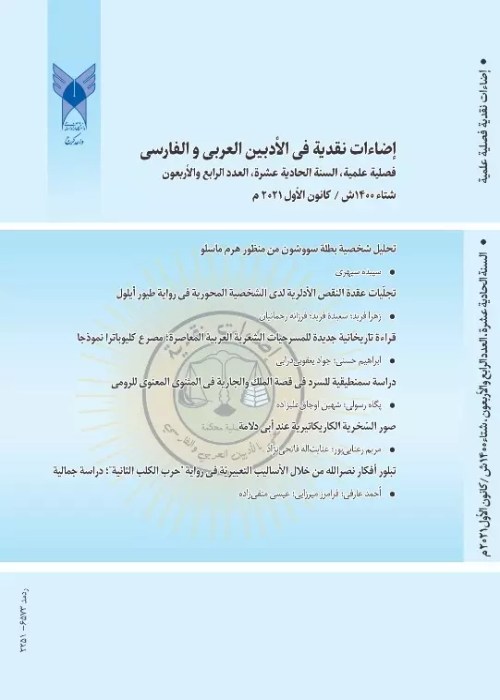The Influence of the Real Characters in imārat-e- yaqubiān (The Yacoubian Building) on ʽalā al-Aswani on the Basis of Mimesis and Representation Theory: A Case Study of Zaki al-Dusuqi
imārat-e- yaqubiān (The Yacoubian Building) is one of the novels of ʽalā al-Aswani, a contemporary Egyptian writer, best known for its critical view of Egyptian society and government. He wrote the novel in 2002 after the name of a so called building. The protagonists of the novel are, in fact, the representatives of various groups of Egyptians people that al-Aswani explain their life events as a vehicle to explores the problems and difficulties of contemporary Egyptian society. This article is based on the theory of mimesis (mohākāt). According to this theory the evaluation of literary work depends on the degree of its power to reflect the surrounding realities and the degree of its honesty in showing what is reflected. Because the art is based on assimilation and impression, and the artist's function is to tell the truth accompanied with the imagination. In this research, the similarities and differences between the fictional character, Zaki al-Dusuqi and the real character, Zaki Rostam, is studied. Its most important outcome is that Al-Aswani in creating Zaki al-Dusuqi, the fictional character, has been greatly impressed from the life of Zali Rostam, the famous Egyptian artist, of his personality, living place, family background, father's socio-political status, lifestyle and financial abilities can be mentioned.


